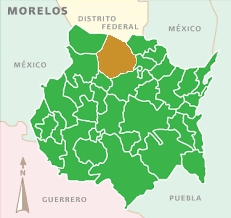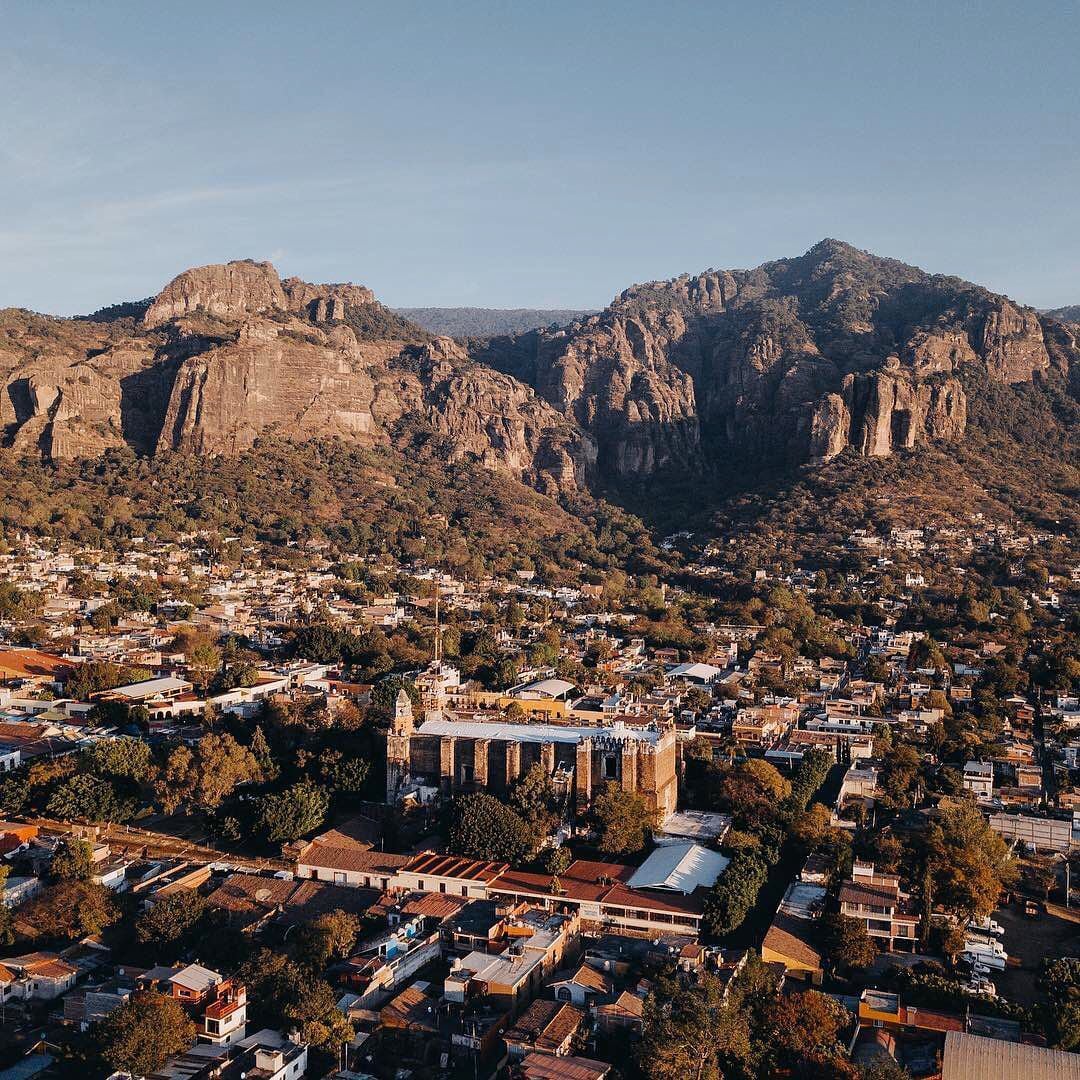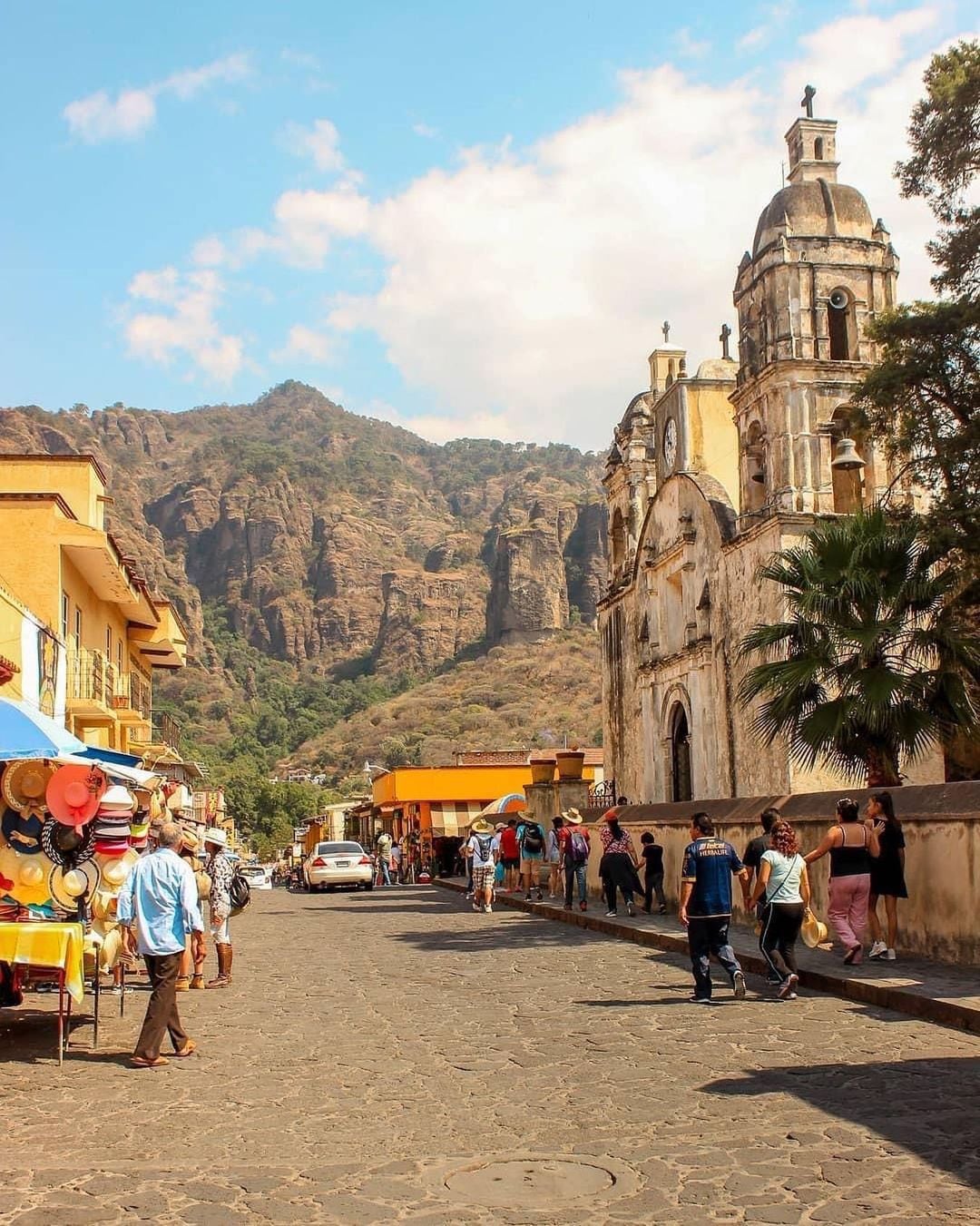
The state of Morelos is full of history, not only because it was the birthplace of great heroes of Mexican history such as Emiliano Zapata, María Fermina Rivera or Agustín Aragón y León, but also because of its cultural, social and economic development. This entity is home to countless emblematic places such as Cuernavaca, Oaxtepec, Cuautla, Xochicalco and two Magical Towns: Tlayacapan and Tepoztlán.
According to the National Institute for Federalism and Municipal Development (INAFED), the word Tepoztlán comes from the Nahuatl tepozt-tli meaning “iron or copper” and tlan which means “abundance or place”. Specialists have concluded that the general translation is “Place where copper abounds”, although it should be added that the Ministry of Tourism states that the word can also be interpreted as “place of the copper ax”.

74 kilometers from Mexico City is a place in the middle of nature, ideal to surprise anyone with its beautiful landscapes, its mysticism and its pleasant climate. In addition, it shelters the impressive Cerro del Tepozteco, one of the favorite places for visitors, because there is a totally different air, full of history and revitalizing energy.
Although it has not been possible to specify who the first settlers of the place were, archaeological finds (ceramic pieces) found in the municipality have revealed that there have been settlements since 1500 BC. Also, thanks to the research work of the National Institute of Anthropology and History (INAH), it was confirmed that the cultures that inhabited the place at later dates were Toltec, Chichimeca and Xochicalco.

After his death he became a god and his influence on later cultures was enormous, so much so that he was named Ce Acatl Tolpiltzin Quetzalcoatl, which means “who was born here in Tepoztlán”. Another important antecedent dating from the pre-Hispanic period is the buildings on the Tepozteco Hill, in which a faience was identified with the representation of the famous Mexica ruler and father of Cuauhtémoc, Ahuízotl, dated 1502.
Today you can visit the archaeological site of Tepozteco, where you can get to know a little about the religious buildings that the aforementioned cultures built. Among the buildings, the temple of Tepoztécatl stands out, which was modified several times by the pre-Columbian peoples. It is recorded that the last changes were made after the year 1452.
Later, with the arrival of the army of Hernán Cortes and the consummation of the Conquest, the Spaniards burst into the town burning everything. This information was released thanks to a writing by the European chronicler Bernal Díaz del Castillo, in which he details: “On another day very tomorrow, we left for Cuernavaca and found some squadrons of Mexican warriors who had left that town and those on horseback followed them more than a league and a half until they were locked up in another great which is called Tepoztlán. Then, so that other peoples might be afraid of it, he had more than half of the houses set on fire.”

After they managed to dominate the inhabitants, the tasks of evangelization began by the Dominican friars, who were responsible for ending the representations of pre-Hispanic gods, specifically that of the god Ometochtli. The construction of the convent of Tepoztlán began in 1570 and in 1580 work began to create the church.
In Independence, the population had little participation, however, in the Mexican Revolution they were actively involved in the agrarian struggle, since General Emiliano Zapata was responsible for recruiting troops in the area. On the other hand, it was until 1936 that modernization work began and the first cinema was installed in 1939 and the first telephone line for public service was in 1956. Electricity came until 1958.
The Ministry of Tourism points out that Tepoztlán is currently famous for being a Magic Town since 2010, for the elaboration of amate paper (obtained from the bark of these abundant trees in the region), for the houses made of “pochote” and the sculptures carved in pochoizcatl thorns. Finally, according to the latest INEGI census, the place has 54,987 inhabitants, with 51.2% women and 48.8% men.
KEEP READING:
Últimas Noticias
Debanhi Escobar: they secured the motel where she was found lifeless in a cistern
Members of the Specialized Prosecutor's Office in Nuevo León secured the Nueva Castilla Motel as part of the investigations into the case

The oldest person in the world died at the age of 119
Kane Tanaka lived in Japan. She was born six months earlier than George Orwell, the same year that the Wright brothers first flew, and Marie Curie became the first woman to win a Nobel Prize

Macabre find in CDMX: they left a body bagged and tied in a taxi
The body was left in the back seats of the car. It was covered with black bags and tied with industrial tape
The eagles of America will face Manchester City in a duel of legends. Here are the details
The top Mexican football champion will play a match with Pep Guardiola's squad in the Lone Star Cup

Why is it good to bring dogs out to know the world when they are puppies
A so-called protection against the spread of diseases threatens the integral development of dogs




